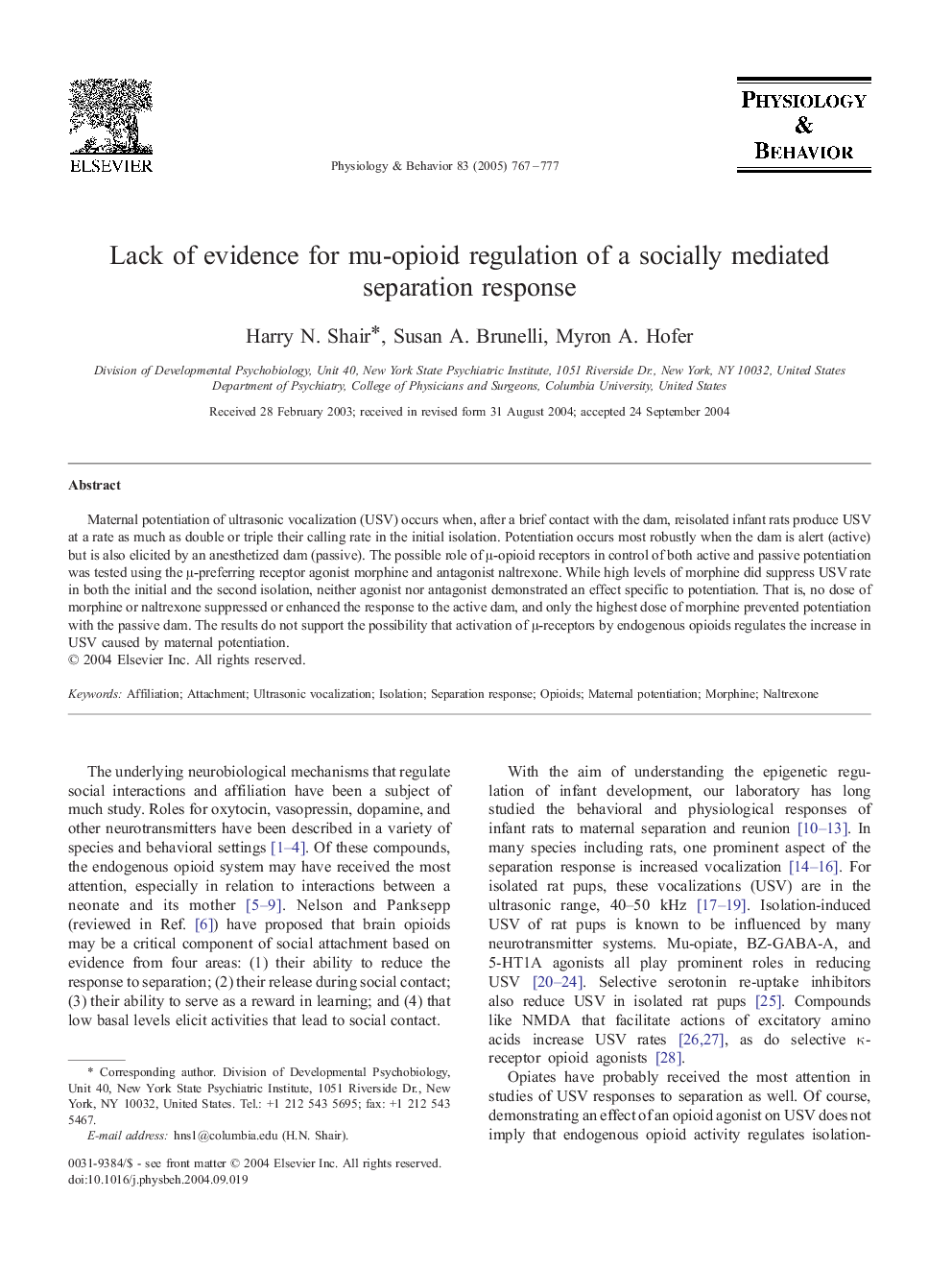| Article ID | Journal | Published Year | Pages | File Type |
|---|---|---|---|---|
| 9149922 | Physiology & Behavior | 2005 | 11 Pages |
Abstract
Maternal potentiation of ultrasonic vocalization (USV) occurs when, after a brief contact with the dam, reisolated infant rats produce USV at a rate as much as double or triple their calling rate in the initial isolation. Potentiation occurs most robustly when the dam is alert (active) but is also elicited by an anesthetized dam (passive). The possible role of μ-opioid receptors in control of both active and passive potentiation was tested using the μ-preferring receptor agonist morphine and antagonist naltrexone. While high levels of morphine did suppress USV rate in both the initial and the second isolation, neither agonist nor antagonist demonstrated an effect specific to potentiation. That is, no dose of morphine or naltrexone suppressed or enhanced the response to the active dam, and only the highest dose of morphine prevented potentiation with the passive dam. The results do not support the possibility that activation of μ-receptors by endogenous opioids regulates the increase in USV caused by maternal potentiation.
Keywords
Related Topics
Life Sciences
Biochemistry, Genetics and Molecular Biology
Physiology
Authors
Harry N. Shair, Susan A. Brunelli, Myron A. Hofer,
